
With the New Year comes a new set of resolutions, plans for the year ahead…and the publication of our Annual Global Retirement Index and this year the top honor goes to Panama. With modern infrastructure, proximity to the U.S., and a mild climate it is no surprise that Panama is a popular retirement location. In fact, Panama has ranked number one on our index a total of 10 times.
Panama topped the categories of Benefits and Discounts, Visa and Residence and tied for first place in Governance and Development while scoring well in the Healthy Lifestyle, and Entertainment and amenities categories.
For expats from the U.S., Panama is convenient because the currency is the U.S. dollar. No matter where you’re from, you’re likely to appreciate the fact that there are many English speakers in Panama, especially among the well-trained medical community. The hub that is Tocumen International Airport makes it easy to fly from Panama to nearly anywhere in the world…often with no layovers.
For a small country, it packs a real punch. But what makes it special from the expat retiree’s point of view is its Pensionado Program. Year after year, Panama takes the number one spot in the index’s benefits and discount and visas and residence categories. IL Panama Editor Jessica Ramesch, says “It deserves the praise it gets. It offers foreign pensioners an easy ‘in’ to becoming legal residents of Panama.”
The program also grants discounts to seniors on a wide range of goods and services, from medical consultations and prescriptions to movie tickets and meals—there are even specific lines marked pensionados to beat the queue.
Panama also provides affordable, good-quality healthcare, anchored by the excellent clinics and hospitals in Panama City, which enjoys a top-notch reputation throughout Latin America.
On top of that, sunshine is year-round in Panama, with a mild, tropical climate, which means expats can get out in the open any day of the year and never worry about ice, snow, or even hurricanes.
Benefits and Discounts
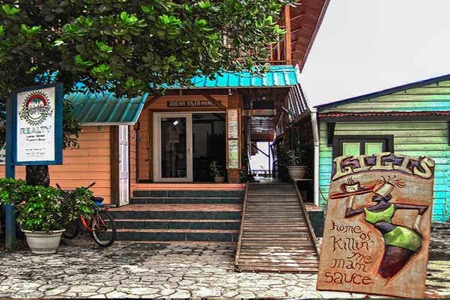
Once again Panama scores an impressive 100 in the Benefits and Discounts category. Panama has put together the most appealing program of special benefits for retirees you’ll find anywhere in the world today…and the program is open to foreigners. Under the pensionado program retirees are entitled to a host of moneysaving discounts.
As a qualified pensionado retiree you will be entitled to 50% off entertainment—such as movies, theaters, concerts, and sporting events, 30% off bus, boat, and train fares, 25% off airline tickets, 30% off hotel stays and up to 25% off at restaurants. In terms of medical expenses retirees are happy to learn that they can receive 15% off hospital bills, 10% off prescription medicines, 20% off medical consultations, 15% off dental and eye exams, and 20% off professional and technical services.
Expat Jim Gault who lives in Pedasi says “Because my wife and I take several medications, we often use this benefit…when you ask for the discount and show the proper identification, the pharmacist will reduce the cost. This is a significant saving for us.”
Visas and Residence
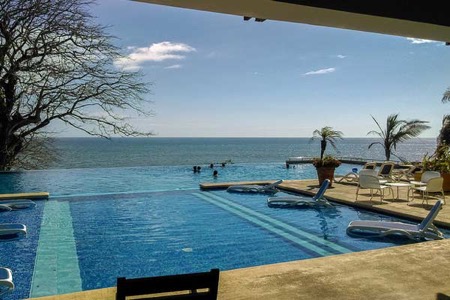
Traditionally, Panama has scored top marks in the Visa and Residence category, and 2019 is no exception. The pensionado residence program is the most popular option for potential expats for many good reasons. It is highly effective in drawing people to Panama because, in addition to providing a permanent residence solution, it also entitles retirees or pensionados to a host of moneysaving discounts.
Jessica explains “To apply as a foreigner, you simply have to show proof of a verifiable pension—corporate or government—of at least $1,000 a month. If you’re applying with a spouse, you need only prove that you receive a combined total of at least $1,250 a month—that’s what the Panamanian government deems sufficient for you to live a good life here.”
Nanette Witmer who lives in David adds “My residency Visa was easy to get in Panama. The paperwork required was straightforward as was the process. My friendly nation visa took only three months, and everything went smoothly. A month after that I received my e-cedula.
Jim Gault says “When my wife, Abbe, and I looked to retire overseas a few years ago, I found that Panama’s excellent Pensionado Visa or Retirement Program was a great way to stretch my Social Security pension. Naturally, the perks sounded like a perfect way to save some money, and they have proven to be just that—providing substantial discounts on many goods and services we regularly use. We regularly enjoy the perks of the Pensionado program to save significant amounts of money, including the tax money we would have paid on the pre-discount rate. We use the money for a better lifestyle, which includes more dinners out, and weekday getaways.”
There’s nothing else like this available. Become a subscriber to International Living Magazine today and you’ll receive the complete 2019 Annual Global Retirement Index for free. Claim yours right here.
Governance and Development
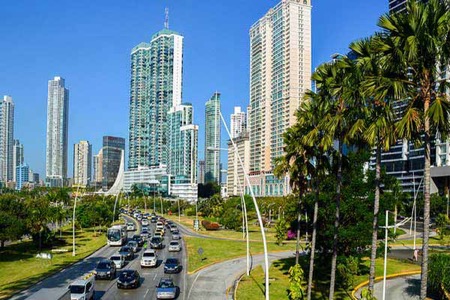
Panama scores 98 and 94 for Governance and Development respectively. As a retirement destination, Panama is simply outstanding, but it is also a business mecca—a place where expats who have big ideas for their retirement can explore their options. Major organizations and businesses from all over the globe come here to take advantage of low costs and the best strategic location for expanding into the Latin American and Caribbean markets.
IL Chiriqui Correspondent Nanette Witmer “The economy is thriving, and Panama has a stable government. There is a lot of opportunity here in Panama as its economy seems to be the fastest growing in the Latin America. There are many opportunities for specialized commercial ventures.”
“One of the best things about Panama is its business- and foreigner-friendly government,” says Jessica Ramesch. “Panamanians are accustomed to foreigners and they welcome them with open arms. Increasing numbers of North Americans, Europeans, and others are moving here. Some come in search of adventure or a quality retirement destination, and many continue to take advantage of all Panama has to offer as a business destination.
Since 2003, Panama has had one of the world’s fastest-growing economies, expanding an average of 8.4% between 2004 and 2013. Despite slowing due in part to a weakening of global growth, it continues to lead the region in 2019.”
Healthy Lifestyle

Not surprisingly, Panama scores an impressive 95 in the Lifestyle category. Despite Panama’s tiny size, it’s one of the most diverse countries you’ll find. The incredibly long coastlines—Pacific and Caribbean—offer endless opportunities for waterside living…not to mention fishing, scuba diving, surfing, and more.
IL Chiriqui Correspondent Nanette Witmer says “You have a real option to live a healthy lifestyle in Panama. The abundance of fresh fruits and vegetables to eat well in addition to being outside more breathing in clean air. The laidback lifestyle with less stress has made most expats feel better.”
And whether you’re seeking a luxury lifestyle or plan to live like a local, you’re likely to live more comfortably and save more easily than you did back home.
Janet Hitchens who lives with her husband, John, in Sant Fe says “People live very well here—most people who come here drop at least 20 pounds. They eat locally grown mangos, papayas, and bananas, as well as locally raised chicken and beef.
Jim Gault says “Hammocks are common and symbolize a relaxed, casual lifestyle. People eat more fresh meat, vegetables, and fruits, and less processed or junk foods.”
Entertainment and Amenities
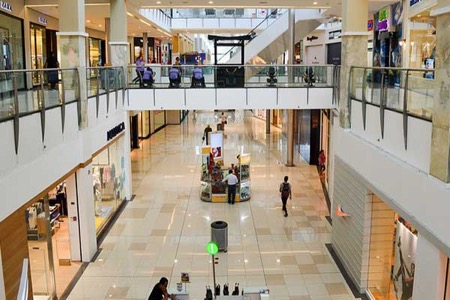
Panama scores a respectable 93 in the Entertainment and Amenities category in this year’s index. Panama City is home to hundreds of skyscrapers, shops, entertainment venues, and modern amenities and services that visitors are surprised to find in this region.
Jessica Ramesch who lives in Panama City says, “I saw a world-class concert, featuring woodwind and strings musicians from Lithuania and Spain, for $20. It doesn’t get more cosmopolitan than Panama City’s San Francisco sector. Virtually anything you could want is within a short striking distance…modern malls, restaurants, supermarkets, and entertainment venues…the vast Omar Park…and some of the best clinics and hospitals in Latin America.
As a qualified pensionado retiree in Panama, you will be entitled to 50% off entertainment—such as movies, theaters, concerts, and sporting events anywhere in the country. Movie tickets in Panama City are $6, and pensionados pay 50% less. On Wednesdays, many theaters are half-price for all moviegoers. A popcorn, nachos, and soda combo will cost you about $6. And in case you’re wondering, Panama gets a wide array of first-run and blockbuster movies. Most films are played in the original language with Spanish subtitles.
Nanette Witmer says “There is no shortage of entertainment in Panama. Festivals, parades, fairs and local happenings are always going on. We have first run movies in English, a roller-skating facility in Boquete, plenty of concerts both a mix of local musicians and expat bands. Expats in Chiriquí also tend to gather at each other’s homes for barbecues, potlucks and social hours.
In the video below our Panama editor Jessica Ramesch discusses some of the reasons why Panama took the number 1 spot in the 2019 Annual Global Retiremet Index.
There’s nothing else like this available. Become a subscriber to International Living Magazine today and you’ll receive the complete 2019 Annual Global Retirement Index for free. Claim yours right here.
An Overview of Traditions and Culture in Panama
By Jessica Ramesch
Although a small country, roughly the size of South Carolina, Panama is very diverse. Officially a Catholic country, Panama has a long-established tradition of religious and ethnic tolerance with large communities from all over the globe including China, Korea, Israel, Lebanon, India, Colombia, and Venezuela to name a few.
It’s estimated that at least 75 % of the population identifies as Roman Catholic, with 15% to 25% belonging to other Christian traditions. Other religions or belief systems practiced in Panama include the Bahá’í Faith, Buddhism, Judaism, Islam, and Hinduism.
Each of Panama’s regions has its own look and feel, not to mention traditions. Indigenous and Afro-Caribbean communities have rich histories here. And, as in North America, colonization forever altered the cultural landscape.
Spanish explorers arrived here as early as 1501 and Panama was part of the Spanish Empire from 1513 until 1821. The failed French attempt to build the Panama Canal, from 1881 to 1889, left its mark and for the better part of the 20th century, through December 1999, the U.S. ran and maintained the Panama Canal.
Early cultures and traditions in Panama

Panama is one of the only countries in the Central and South America region with a large indigenous population. Seven major tribes continue to live traditional lifestyles here, and the largest rule autonomously in massive reserves. Small groups of visitors are welcome to visit and learn about the tribes and their efforts to keep their lands in pristine condition.
The Guna possess what may be some of Panama’s most spectacular real estate, as many of them make their homes on the jewel-like Caribbean isles of Guna Yala. Here there is a focus on sustainable tourism. Tourists enjoy the simplicity of white-sand beaches, turquoise waters, and seafood plucked fresh from the ocean.
Tours to the Emberá-Wounaan communities, are also popular. Along with the Guna and the Ngäbe-Buglé tribes that inhabit the scenic Chiriqui and Bocas del Toro regions, the Emberá are known for their artistic handicrafts.
Notable traditions that have survived into modern times include ancestral hunting, fishing, and the custom of living in elevated huts. Emberá women still tend to go bare-chested and wear colorful cloths from the waist down, with flowers in their hair. Another trademark is their ebony “temporary tattoos.” For these they use a dye made from the juice of the jagua fruit. Much like Indian henna or mehndi, the stain lasts a couple of weeks.
Panama’s Deep Afro-Caribbean Roots

Panama is home to thousands of people of African descent, whose ancestors came from places like Jamaica, Barbados, Trinidad and Tobago to help build the canal…or were slaves brought over during colonial times. Though they live all over the capital and the rest of the country, Afro-Caribbeans have predominantly settled in the provinces of Bocas del Toro and Colón. In these provinces, many locals speak English with a Caribbean accent.
If you’re a lover of music and dance, you won’t be disappointed. Here you will hear the Latin rhythms of salsa and merengue, Afro-Antillean inspired reggae and percussion, and so much more.
Spanish Folklore in Azuero and Beyond

There are many places in Panama where you can see evidence of its deep Spanish roots. The Azuero peninsula, known as the “cradle of folklore,” is perhaps the most popular. For major national celebrations and festivals, there is no better place. During the Carnival season, locals and tourists flock here in droves. Traditional dances are set to tipico music, characterized by yodeling, accordions, and small guitars called mejoranas.
There are over 700 festivals held in Panama every year, so no matter when you visit, you should be able to find one. Dancers wear everything from flashy carnival wear to the dreamy white dress known as the pollera. The biggest event of the year is Carnival, held over the four days preceding the Catholic Lent. (Dates vary every year, but it’s usually in February.)
Culture and Traditions in Today’s Panama
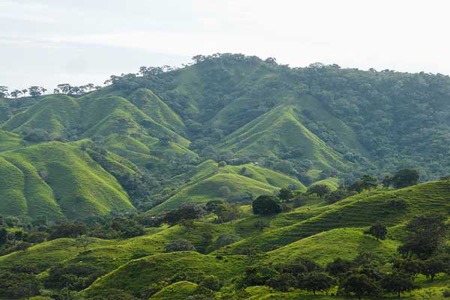
Though Spain and France played important roles in Panama’s history, the existing republic came into being in 1903. A strong U.S. presence helped mold Panama into one of Latin Americans most modern and advanced countries.
From 1904 to 1914, the U.S. built the Panama Canal, staying on to administer the waterway and the surrounding “Canal Zone” and later building and staffing military bases. In the decades that followed, everything from infrastructure to fashion trends were influenced by the U.S. presence and international traffic through the canal.
Today, international residents, visitors, businesses, and culture continued to influence Panamanian life. Local infrastructure remains excellent…and Panama’s modern, cosmopolitan vibe makes it all too easy to forget that you’re in Central America.
Land in Panama City and you’ll see a scintillating skyline of chrome and steel towers. Along the Panama Bay is the Cinta Costera, or coastal belt, a wide avenue lined with greenery, walkways, bicycle paths, recreation areas, and more. It borders the busy International Banking District, where sharp-dressed execs sport smart phones and drive the latest model cars. That is, when they’re not riding the new metro that sweeps through the city’s busy commercial areas. The nation is buzzing with energy, and individuals here are reaping the benefits.
Need-to-Know: Etiquette, Business Interactions, and More

A regard for personal connections is perhaps the best-known trait in Panama, particularly in business. Even today, Panamanians take time and effort to establish a personal relationship before entering into a business relationship (as is the case in most of Latin America).
Thankfully, Panama’s international history and long association with the U.S. means that Panamanians are accustomed to foreigners from all over the globe. Due to its strategic location, and unique position as a trading hub, Panamas citizens represent almost all of the world’s cultures and religions. It is a true “melting pot” of races, with over 70% of the population being mestizo (mixed Amerindian and Caucasian).
You will also find that the term “PC” or “political correctness” carries little weight here. Panamanians are quite direct. If you gain weight, the next time your local friend sees you, he or she is likely to say: “You’ve gotten fatter.” In general, people here don’t mean to offend, so they see no reason to be PC. People here just tend to say whatever they’re thinking.
If you’re invited to someone’s home, it is polite to bring a small token, for example, flowers, a box of candy, a souvenir from your hometown, or a bottle of wine. Hands are kept above the table, elbows off. Talking with a full mouth or chewing with an open mouth is, as elsewhere, considered impolite. Conversation while eating is kept to “light” topics such as sports, favorite foods, the weather, etc. Compliment the food a few minutes in and, before leaving, thank your host for a lovely meal.
Also, be prepared for pampering. You should always offer to help, but in formal households, your offer will be politely refused (well-to-do locals will have a maid to do the clearing and washing, and won’t want you in the way). You’ll more than likely be served first. If possible, invite your host to a nice lunch or dinner to reciprocate (at your home if you have one in Panama, and if not, at a restaurant). Make sure you’re not too rusty when it comes to general dining etiquette, as upper-crust Panamanians have impeccable manners.
The Best Places to Vacation in Panama
After 10 years of covering this country for International Living, you’d think writing about the best places to vacation in Panama would be a cinch. The more you know, the easier it should be…but the opposite is often the case. I know so many great Panama vacation destinations that it’s hard to narrow it down to just a few.
There are places like the jungles of the Darien that appeal to adventure seekers, and places like Isla Contadora that offer eco-tourists in Panama a bit of luxury in a green environment. And then there are the must-sees…vacation spots in Panama that no traveler should miss. Here are three destinations that represent three different “faces” of Panama.
The Best Places to Vacation in Panama: The Islands
At the top of the list are the islands of Guna Yala, formerly known as the San Blas islands. Here, the Guna (formerly spelled “Kuna”) live much the way they did when the Americas were first “discovered.” The Guna have their own autonomous government and they are diligent about protecting their reserve lands, allowing only low-impact, sustainable tourism. You won’t find any big-name resorts here—only eco-friendly huts and small hostels.
There are more options than ever these days, but I would go with Yandup Island Lodge. The island is close to the Ukupseni community, which many agree is one of the region’s most beautiful. Beware, first-time visitors feel like they’re dreaming when they see the baby-blue waters dotted with itty-bitty islands. White sand beaches are everywhere you look and you can swim from one to another. The only way to get here is by air on a small plane. Visit Air Panama to check out flights to the Playon Chico airstrip.
Remember, you’ll be in traditional dwellings (typically with mosquito netting over beds) no matter where you stay in Guna Yala. Don’t expect air conditioning and don’t “bug out” if there are a few bugs. Bring eco-friendly mosquito repellent and sunscreen and you’ll be all set to enjoy the famous baby-blue waters of the Caribbean.
Highland Vacations in Panama’s Boquete Region

It’s a 40-minute drive from David to highland towns like Boquete and Volcan. In Boquete, be sure to visit The Rock, the best restaurant I’ve been to in years (the views are jaw-dropping). Head to Volcan or Cerro Punta for strawberries and a thick, goopy cream called nata, or fresh mixed berry milkshakes…there are multiple stands but Dulces Caseros Alina’s is the best-known. Just ask any local where to find it!
There’s so much to see in this area, you’ll have trouble choosing. You can visit ancient petroglyphs at El Nancito Archeological Park, see thoroughbreds at the famous Haras Cerro Punta horse farm, or hike through the bi-national La Amistad forest (or to the top of the 11,000-foot Baru volcano).
Panama City: My Top Pick
Believe it or not, Panama City is my top pick for best places to vacation in Panama. I can’t help being biased—I choose to live here and absolutely love it. Just head to the picturesque promenade that is the Cinta Costera and you’ll see why. The Cinta wends its way along the Panama Bay, offering snap-worthy views of the sparkling city skyline. You can walk from the Banking District to colonial Casco Viejo and see some of the city’s best features along the way.
For a great weekend in Panama City, here’s what I recommend: contact Los Cuatro Tulipanes and rent a beautifully restored colonial in Panama City’s historic quarter, Casco Viejo. Spend a day or two exploring the stately plazas and enjoying the cool food and nightspot scene.
In Casco, Plaza Bolivar is my favorite spot to people-watch…it’s lined with cafés and the site of the famous Salon Bolivar, where Simon Bolivar tried to create a league of nations and thus unify the region.
On any given evening in Casco Viejo you’ll find venues offering live jazz, salsa, classic rock, and more (make sure to take in a gig at Danilo’s Jazz Club, at the elegantly restored American Trade Hotel).
Panama’s art community is centered in Casco and events here vary from film screenings to “artblock” parties that continue from one block to the next. Dress is typically casual or bohemian chic. Restaurants run the gamut, from gourmet places like Tomillo to neighborhood dives (my favorite is microbrew pub Rana Dorada de Casco Viejo).
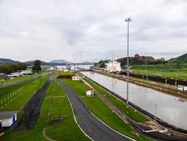
Plenty of Panama City’s neighborhoods are walkable, including Casco Viejo and El Cangrejo. For longer distances, you have the Panama City Metro and Metrobus system, a vast cadre of yellow cabs, and more upscale services like Uber and Tuchofer, so there’s no excuse to stay in your hotel room.
Go hiking or birding around Gamboa. Rub shoulders with friendly and beautiful people at trendy downtown bars. Try new and exciting foods. The point is, it’s a convenient, modern city offering a huge range of activities…so just get out there and explore!
Subscribe to International Living Magazine today and you’ll get the complete low-down on Panama and the other top 24 destinations we’ve ranked and rated in this year’s Global Retirement Index.
There’s nothing else like this available. Claim the complete Index by subscribing right here.

